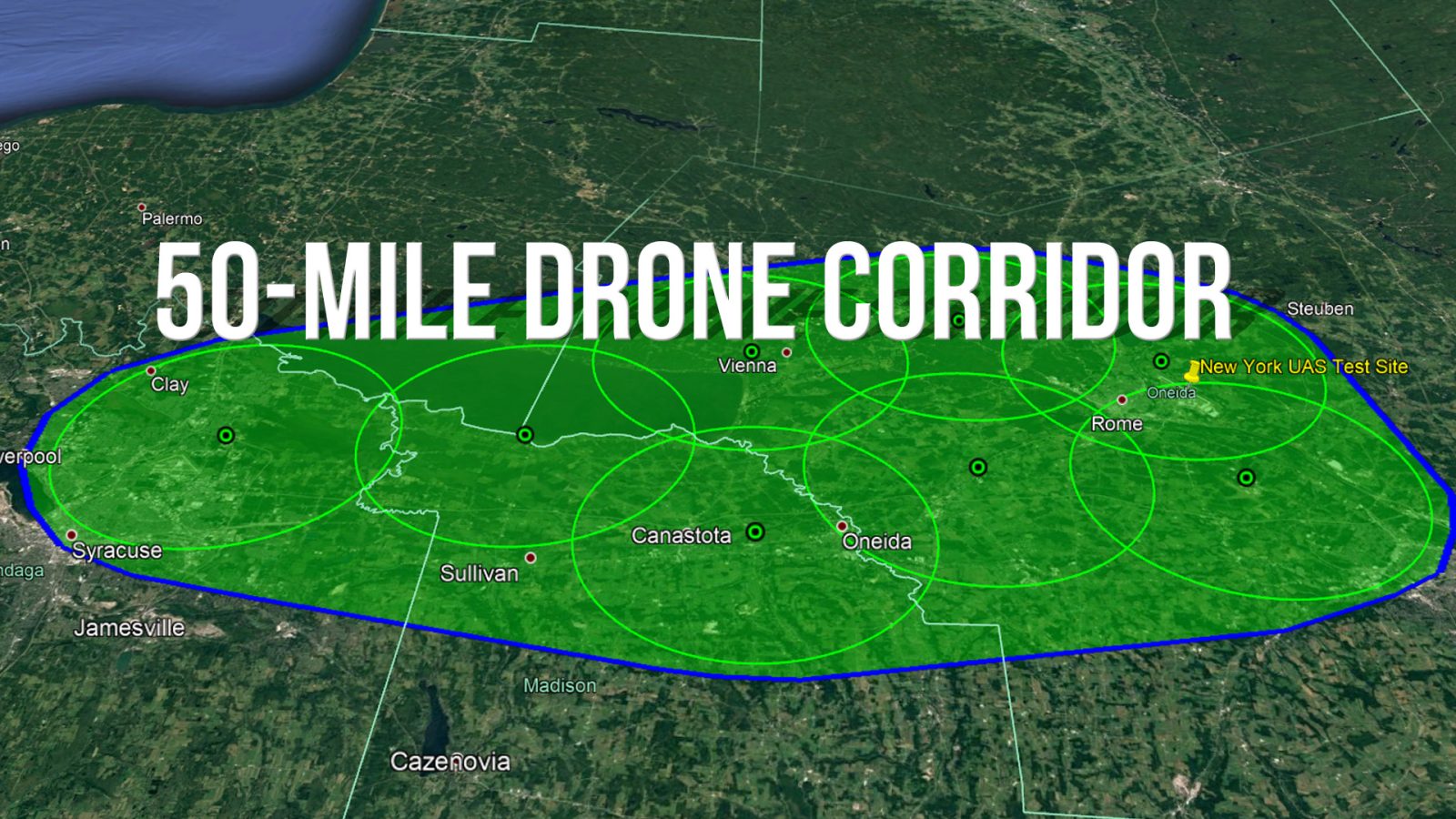
The Northeast UAS Airspace Integration Research Alliance (NUAIR) says it has gotten approval from the Federal Aviation Administration to operate beyond visual line of sight (BVLOS) flights over a vastly expanded 35-mile swath of New York’s UAS Test Site drone corridor.
The authorization is an important step in permitting NUAIR, which manages New York’s 50-mile UAV trial zone, to expand the sorts of BVLOS trial flights that are expected to become a main mode of enterprise operation at some point in the future. According to its website, NUAIR has completed a total of 3,924 exploratory missions since the New York UAS Test Site went into service in 2019, though BVLOS sorties were only permitted in an eight-by-four-mile space.
Under the new rules, that BVLOS area – which had previously spanned from the project’s headquarters at Griffiss International Airport in Rome to the southeast – will be expanded well to the west toward Lake Oneida. Officials call that enlarged scope of operation critical to pushing BVLOS tests further ahead, and speeding development of the operating rules and navigation systems future drone applications will require.
“We have a long track record of safe UAS test flights and real-life implementation, including BVLOS operations,” said NUAIR chief of operations, Tony Basile. “This new BVLOS airspace authorization will allow us to test more advanced, long-range flights, and help us prove BVLOS operations can be done safely – the key component in realizing the true economic advantage of commercial drone operations.”
The New York UAS Test Site is just one of seven in the US designated by federal administrations to trial advanced drone operations. In doing so, those organizations work in consultation with NASA in developing a range of future advanced air mobility, urban air mobility, and autonomous air vehicle applications.
Though UAVs are obviously already used by many businesses to facilitate deliveries of goods, mapping, mining, and infrastructure inspection, and first responder activity, the ability to stage increased BVLOS flights will vastly broaden the horizon – and distances – of how drones are deployed.
New York has put a lot of money and effort into backing its test site, which it hopes will attract businesses looking to exploit opportunities UAV offer, and thrust the state to the forefront of drone innovation.
In September, officials announced the corridor would become the first in the US to use 5G technology for navigation purposes. The following month, NUAIR said it would join the state’s Thruway Authority in trial use of drones to inspect the administration’s 570-mile toll highway system – an effort which will presumably involve long-range BVLOS flights.
Anthony J. Picente Jr., executive of Oneida County, where Griffiss International Airport calls home, hailed the expansion of BVLOS testing as another big step in the project’s progress.
“The Test Site at Griffiss International Airport has long established itself as an elite hub for all things UAS,” he said. “The one-of-a-kind testing, research and development that occurs here is elevating the entire industry. This latest FAA authorization will allow our 50-mile drone corridor to push the limits of what is possible yet again, and we look forward to the new advancements that will result.”
FTC: We use income earning auto affiliate links. More.




Comments